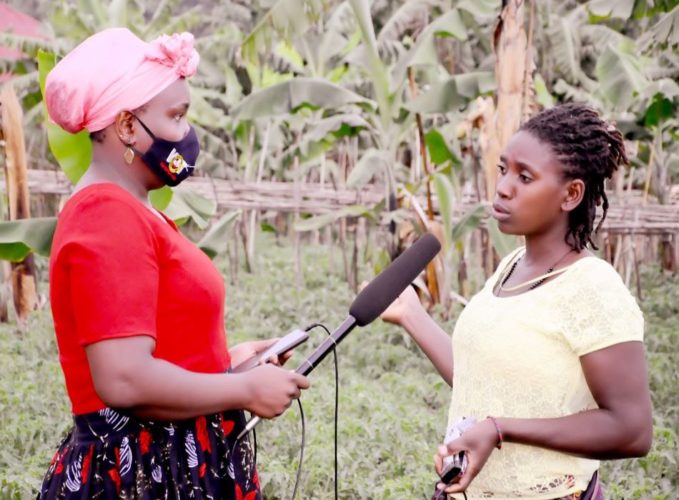In early 2022, 12 million East Africans faced acute food insecurity, meaning that they did not even manage to eat one meal a day. By November 2022, that number has increased to 21 million people.
It’s important to go beyond the headlines and statistics and remember that these are individual women, men and children who are suffering from hunger every day.
That’s what Farm Radio International strove to do in our online town hall on Nov. 2, 2022. In this engaging event, we explored the causes and consequences of the food crisis in East Africa, as well as solutions that are being developed on the ground.
The town hall featured an impressive array of speakers, including Sibi Lawson-Marriott, of the World Food Programme; Betty Mujungu, a Ugandan radio broadcaster; and Brenda Mugwisagye Murangi, a Farm Radio Uganda staff member and former broadcaster. Also speaking was Farm Radio’s own Gizaw Shibru.
Watch Food Security in East Africa – Beyond the Headlines.
Climate change and food security in East Africa
From unpredictable weather patterns to natural disasters and pest infestations, climate change is wreaking havoc on African agriculture.
When things don’t go right and there’s not enough food to eat, women often experience the impacts most sharply, given their traditional responsibility for sourcing food. According to Ugandan broadcaster Betty, “Women contribute 80 per cent of food security.”
The stress from food insecurity can lead to domestic violence, as well as desperate decisions like early marriage or selling valuable assets.
A reason to be hopeful
The situation is serious. However, there are reasons to be optimistic. After all, many in the area have survived previous crises, and they have the energy and ideas to survive this one.
“We cannot afford to throw up our hands and think that there’s no solutions. There are absolutely solutions, tools, things that can be done,” said Sibi.
The solution to the food crisis starts locally. From fertilizing soil with chicken droppings to modifying storage practices to reduce post-harvest losses, local solutions are low-cost and effective. They also help farmers build self-sufficiency and climate resilience.
What farmers need is information and investment, including information tailored to women, and that’s something that radio can help provide.
As Gizaw explained, “We work with over 1,300 radio stations who broadcast farming programs with different languages – over 800 different languages. Not only do we speak with them in French or English, but we speak with them in Kiswahili, Amharic, Hausa, Bambara, you name it. We speak and we reach to them, and that changes their life. So something can be done and is being done.”

